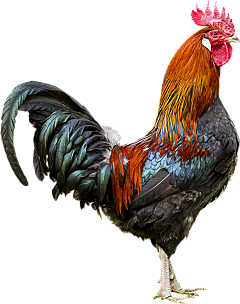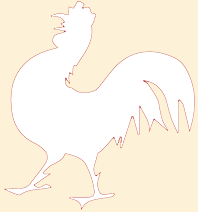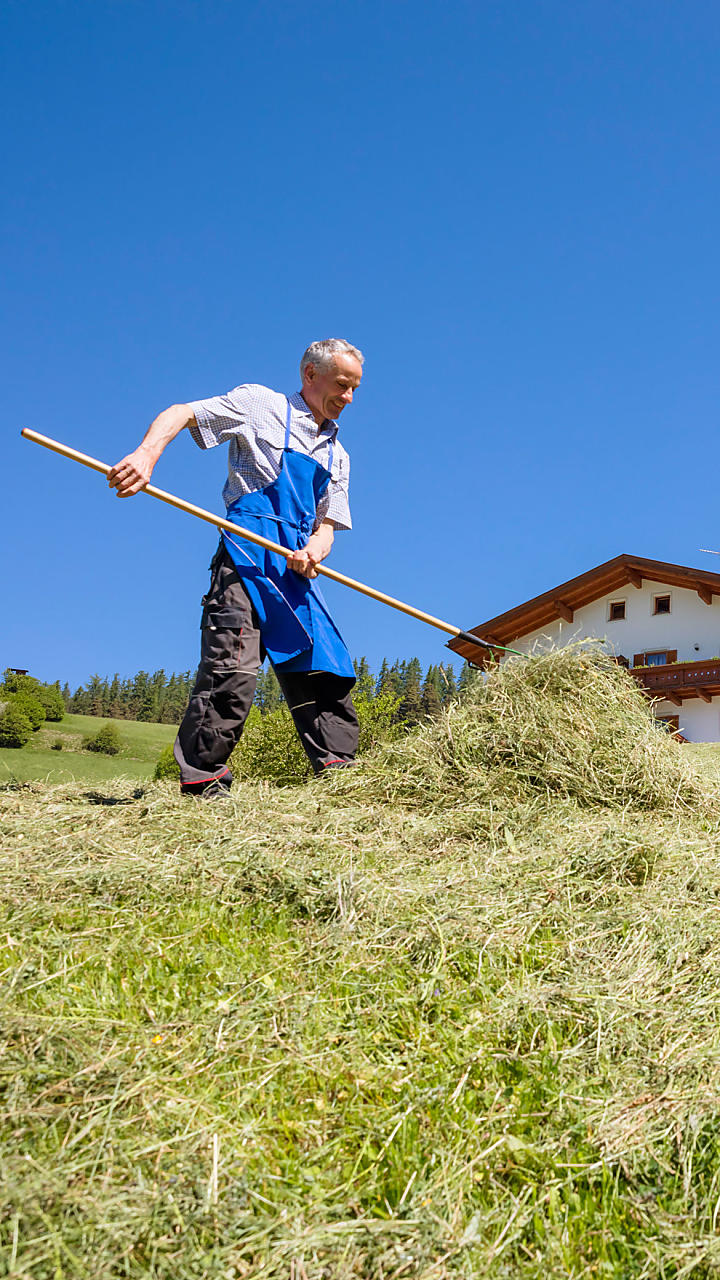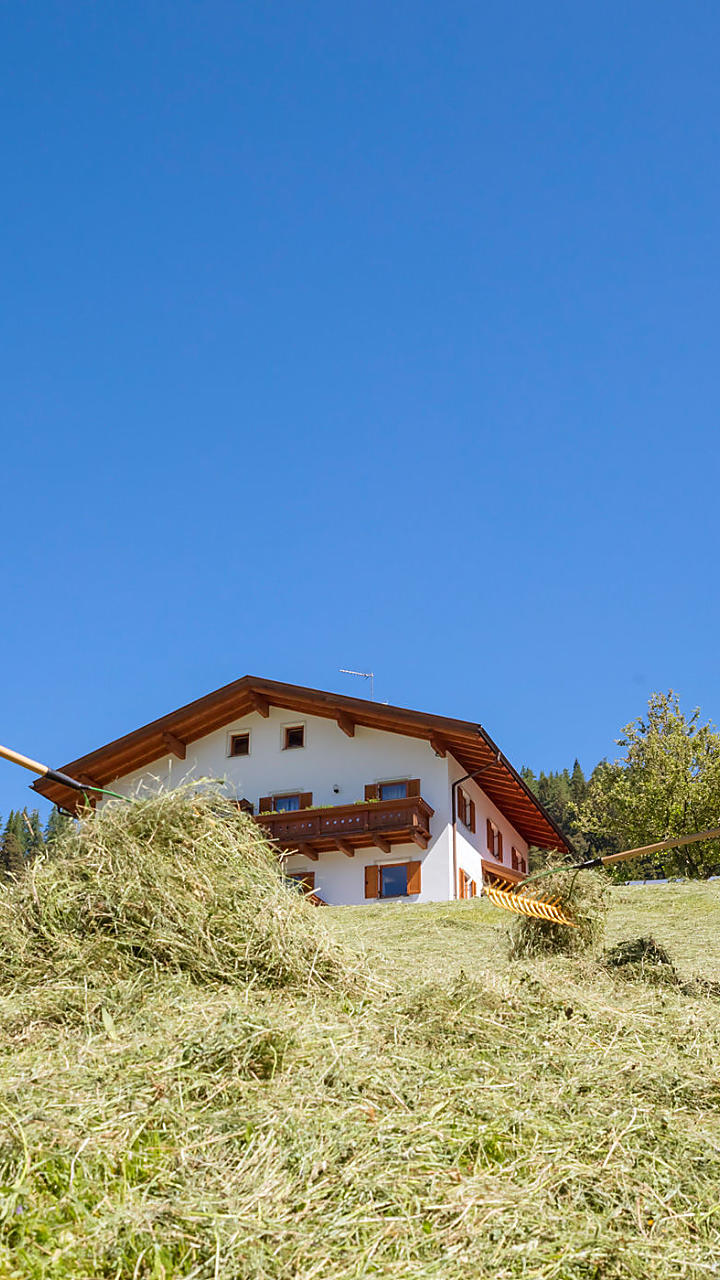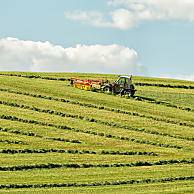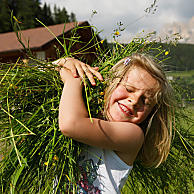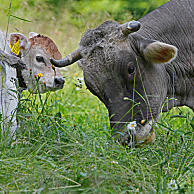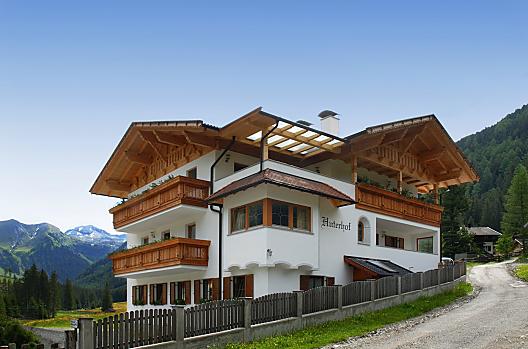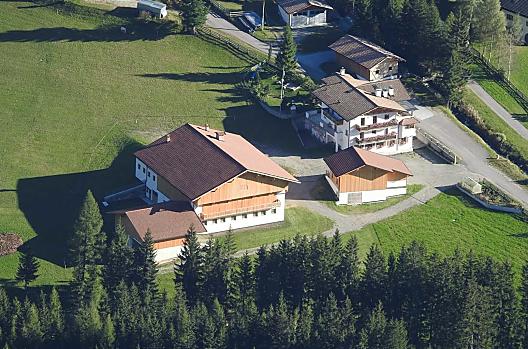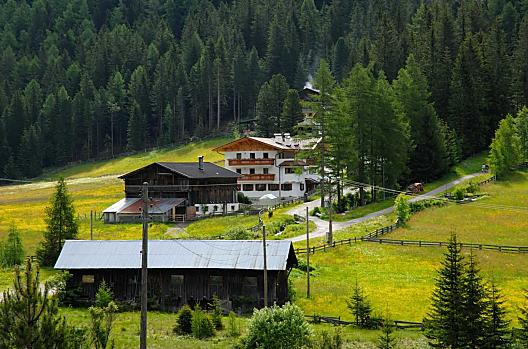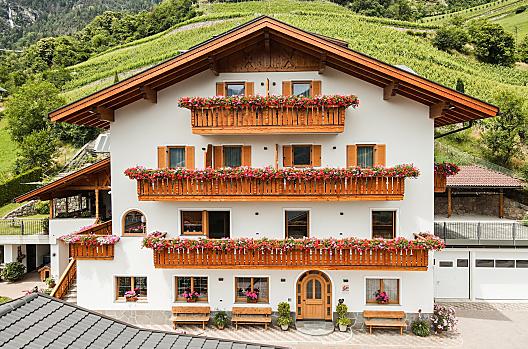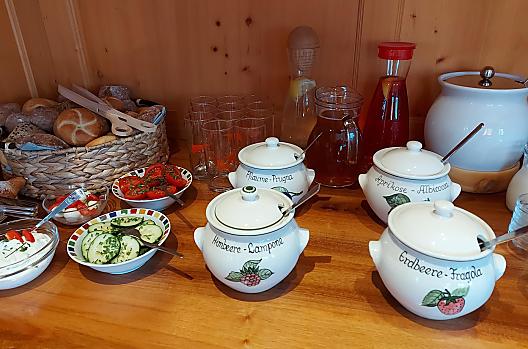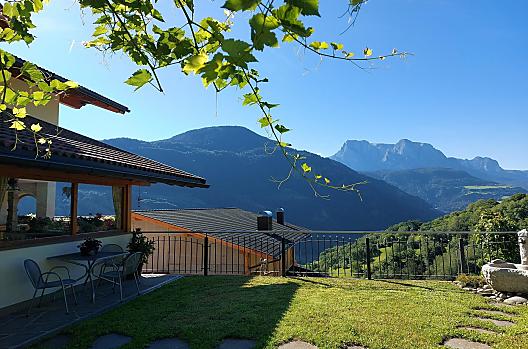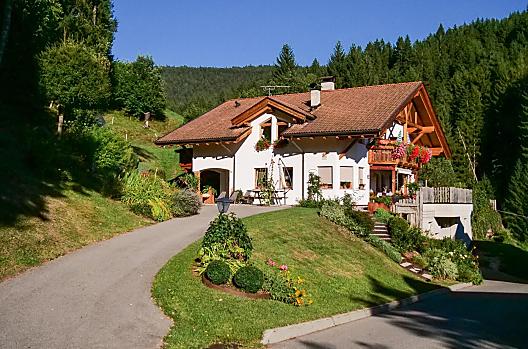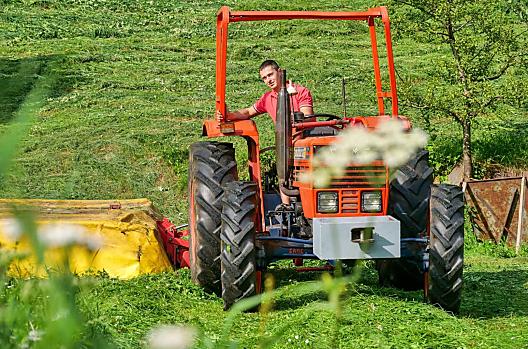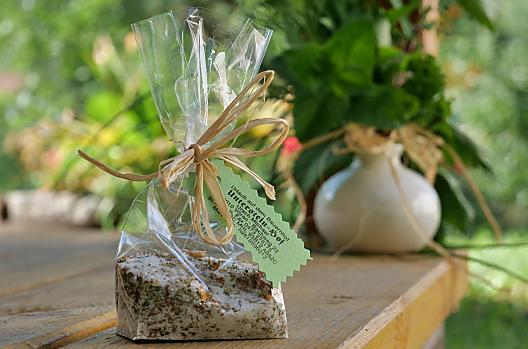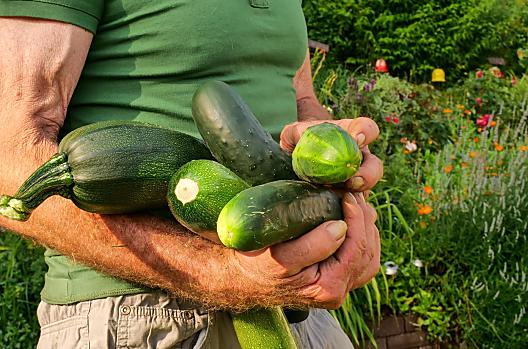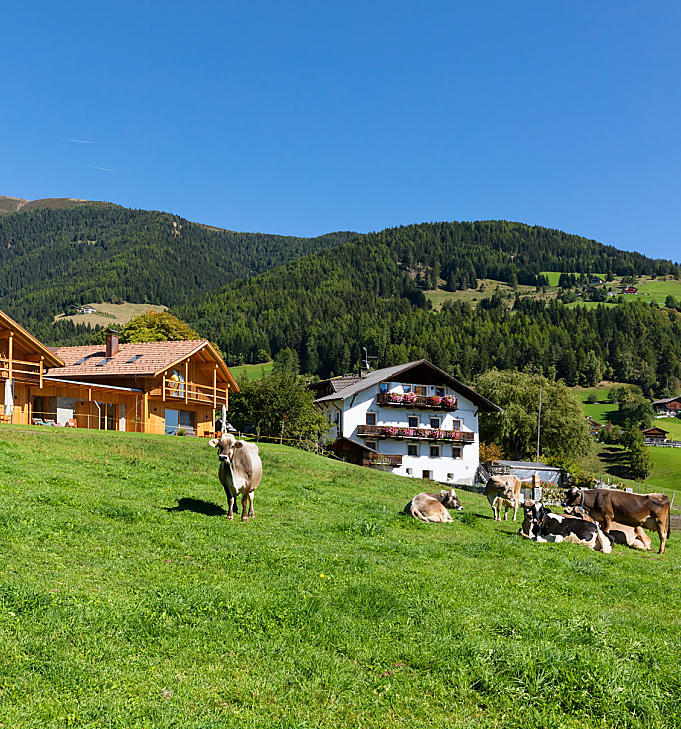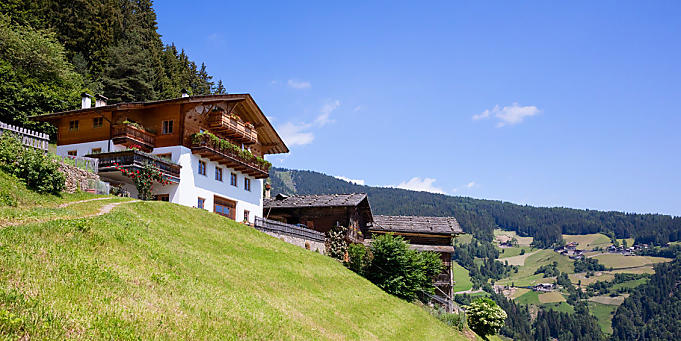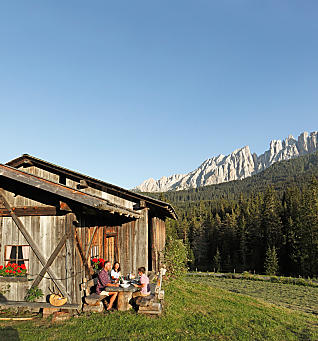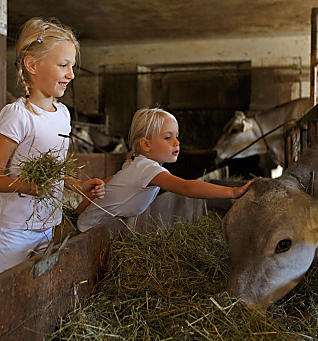Hay harvest
Cutting, turning, bringing in
"When the white elder blossoms, it's time to mow", reads an old farmer's proverb. From mid-May to the end of June, the scent of fresh hay wafts over South Tyrolean farms with the first cut grass.
"When the white elder blossoms, it's time to mow", reads an old farmer's proverb. From mid-May to the end of June, the scent of fresh hay wafts over South Tyrolean farms with the first cut grass.
Did you know that the hay is used as feed for the animals in winter? That the farmers make three to four cuts in the summer? And that South Tyrol has such steep meadows that in some places the hay is still brought in without machines as it was in the past? The hay harvest on South Tyrol's mountain farms is one of the most important events in the agricultural calendar. Numerous meadows are tended all year round and mowed in summer. The lush green of the meadows around the farms contributes a great deal to the landscape throughout the region. Different grasses, flowers and herbs thrive up high on the species-rich Alpine meadows. This nutrient-rich grass is also brought in by the farming family. The guests in the holiday apartments and rooms are right there during the hay harvest. They not only have the opportunity to observe the harvest up close, but also to lend a hand.
It depends on the weather
300 days of sunshine a year not only make South Tyrol a wonderful holiday destination, they also give the mountain farmers a bountiful harvest. Depending on the altitude, from mid-May to the beginning of June, the grass is cut for the first time in early summer. This is called hay. Because the plants have had a long time to thrive after the winter, the first cut is the most nutritious. A close look at the weather forecast and a bit of luck are required to find the right time for the hay harvest. If three dry days are in sight, it starts. The lush grass is mowed with the use of machines, and in particularly steep places it is done laboriously by hand. Depending on the weather, it stays in the meadow for a day or two. It has to be turned again and again so that it dries evenly on all sides. Many helping hands are needed on the third day. The dry grass is pushed together with a rake so that the farmer can easily collect it with the hay wagon and bring it to the barn. However, some farms in South Tyrol are so steep that machines can't be used. That's where the cable winch comes into play to transport the hay.
Groamet and Pofl
After the successful first hay harvest, the hard-working mountain farmers still have work to do. To be able to fill the barn sufficiently, the second cut is usually made in mid-July. In the heat of midsummer, the sweaty work of the "groamet", the second cut, begins. Usually the whole family and even close relatives help with the harvest on the mountain farms in South Tyrol. The "Pofl" follows at the end of August, the third cut. How many grass clippings there are on the meadows depends on the altitude. Sometimes only two cuts are needed high up, while lower down, with a bit of luck, the grass can be cut four times.

